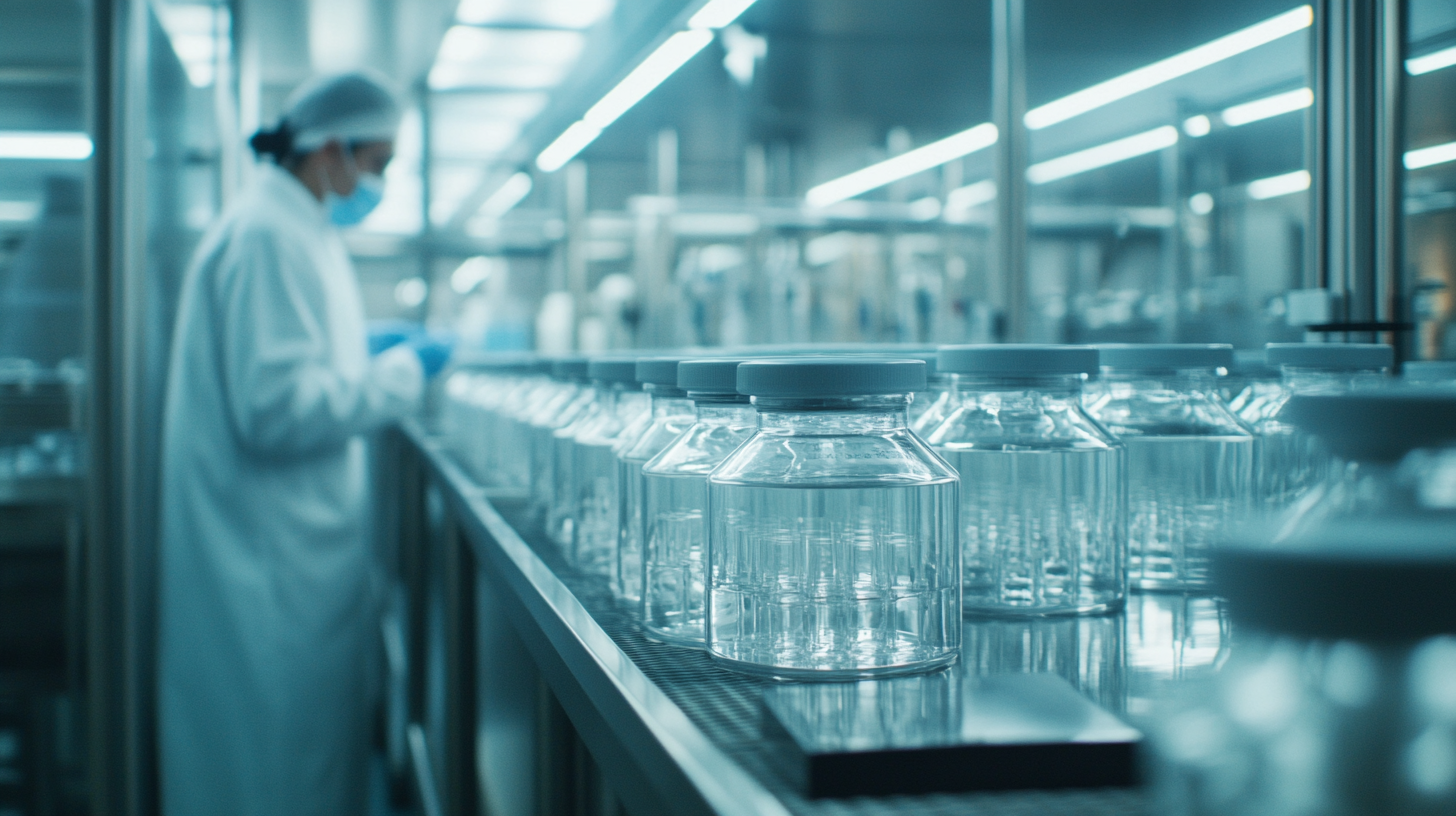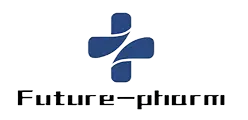
How to Source High Quality Pharmaceutical Chemicals for Global Supply Chains
In the rapidly evolving landscape of global supply chains, sourcing high-quality pharmaceutical chemicals has become a critical priority for manufacturers and distributors alike. The pharmaceutical industry relies heavily on these chemicals to produce effective and safe medications that meet stringent regulatory standards. However, the process of sourcing these essential materials often presents numerous challenges, including ensuring quality, compliance with regulations, and navigating complex international markets. As the demand for innovative pharmaceuticals continues to rise, the ability to efficiently source high-quality pharmaceutical chemicals can significantly impact a company's competitiveness and success.
To successfully navigate this landscape, stakeholders must adopt strategic sourcing practices that prioritize quality while also considering cost-effectiveness and reliability. This blog will explore essential strategies and best practices for sourcing pharmaceutical chemicals, including understanding regulatory requirements, evaluating suppliers, and utilizing advanced technology for supply chain management. By focusing on these critical areas, companies can ensure that they secure high-quality pharmaceutical chemicals that not only meet their operational needs but also foster trust and safety in the products they deliver to patients worldwide.

Identifying Reliable Suppliers in the Pharmaceutical Chemical Market
In the competitive landscape of the pharmaceutical chemical market, finding reliable suppliers is crucial for maintaining a high-quality supply chain. Recent trends indicate that the Valeronitrile market is experiencing substantial growth, projected to reach a value of USD 380 million by 2026, with a compound annual growth rate (CAGR) of approximately 4.5%. Such figures highlight the increasing demand for specialized pharmaceutical chemicals, emphasizing the need for sourcing partners who can consistently deliver quality products. Identifying trustworthy suppliers begins with assessing their certifications and compliance with global regulatory standards. The pharmaceutical industry operates under stringent guidelines, necessitating that suppliers adhere to Good Manufacturing Practices (GMP) and possess relevant certifications, such as ISO 9001. Reliable suppliers often share their quality assurance processes and can provide documentation that confirms their adherence to these standards, ensuring that the chemicals meet the required specifications for pharmaceutical applications. Furthermore, leveraging industry reports and market studies can aid in evaluating potential suppliers’ reliability. Data from recent market analyses show that manufacturers with established track records in high-purity chemical production are becoming increasingly sought after. Engaging with suppliers who have demonstrated stability in their operations and positive customer feedback can mitigate risks and enhance the integrity of the pharmaceutical supply chain. These proactive measures are essential in a market where the quality of raw materials directly impacts product efficacy and safety.

Evaluating Quality Standards and Regulatory Compliance in Sourcing
When sourcing pharmaceutical chemicals for global supply chains, ensuring quality standards and regulatory compliance is critical. Pharmaceutical products are subjected to rigorous regulations due to their potential impact on public health. A thorough understanding of the local and international regulations governing pharmaceutical chemicals is paramount. This involves familiarizing oneself with guidelines set forth by organizations such as the FDA, EMA, and WHO, which outline the requirements for quality, safety, and efficacy.
Evaluating suppliers based on their adherence to these regulations is essential. A reliable supplier should be able to provide documentation proving compliance with Good Manufacturing Practices (GMP) and relevant certifications such as ISO. Conducting audits and assessments of potential suppliers can offer insights into their operational standards and quality control processes. Additionally, transparent communication about sourcing practices, ingredient origins, and risk management strategies can greatly enhance trust and mitigate potential compliance risks.
It is also vital to stay informed about evolving regulations, as the pharmaceutical industry is known for its dynamic nature. Regularly reviewing updates from regulatory bodies and engaging in industry forums can help sourcing professionals stay ahead of compliance challenges. By prioritizing quality standards and regulatory compliance in sourcing decisions, companies can safeguard their supply chains and maintain the integrity of their pharmaceutical products.

Best Practices for Negotiating Contracts and Pricing Strategies
When negotiating contracts and pricing strategies for sourcing high-quality pharmaceutical chemicals, understanding the dynamics of supplier interactions is crucial. Suppliers may face their own pressures, leading to price increases and changes in availability. Therefore, one effective approach is to start the conversation by actively listening to your suppliers. This creates a conducive atmosphere for open dialogue, where both parties can express concerns. Demonstrating empathy can position you as a cooperative partner, making it easier to negotiate favorable terms.
As you prepare for negotiations, particularly during peak seasons, it's important to strategize well ahead of time. Establish clear objectives regarding pricing and contract terms, and anticipate potential challenges. Utilize data and analytical insights to support your arguments. For instance, leverage market research to highlight trends in chemical pricing or to benchmark against competitors. This not only strengthens your negotiating position but also encourages suppliers to provide more competitive offers.
Moreover, consider incorporating clauses such as price increase caps into contracts. These provisions can protect your interests against unexpected fluctuations in pricing, thereby helping in long-term planning. Additionally, exploring outcomes-based pricing agreements may align incentives between you and the supplier, as this approach can ensure that you only pay for the value generated by the chemicals provided. Ultimately, a well-informed and structured negotiation strategy will enhance your ability to secure the best outcomes in sourcing pharmaceutical chemicals globally.

Leveraging Technology for Efficient Supply Chain Management
In today's global pharmaceutical landscape, the efficient management of supply chains is crucial for ensuring the availability of high-quality chemicals. Leveraging technology can significantly enhance the sourcing process, helping companies to navigate the complexities of international logistics and regulatory compliance. With digital platforms and data analytics, pharmaceutical firms can streamline their procurement strategies and improve overall transparency in the supply chain.
One of the key technological advancements facilitating this transformation is the integration of real-time data monitoring systems. These systems allow companies to track the movement of chemicals from suppliers to manufacturers, minimizing the risk of delays or contamination. By employing blockchain technology, firms can create an immutable record of every transaction, ensuring authenticity and quality control. This not only builds trust among stakeholders but also simplifies audits and regulatory compliance.
Additionally, artificial intelligence (AI) plays a vital role in predicting demand and identifying potential bottlenecks in the supply chain. By analyzing historical data and market trends, AI-driven tools can help companies make informed purchasing decisions, reducing excess inventory and associated costs. Advanced algorithms can also optimize routing and logistics, ensuring that pharmaceutical chemicals reach their destination swiftly and securely. Embracing these technological innovations enables organizations to fortify their supply chains, ultimately delivering high-quality products to meet the growing global demand.
Assessing Risk Management and Mitigation Strategies in Sourcing
Effective risk management is crucial for sourcing high-quality pharmaceutical chemicals within global supply chains. When procuring these materials, understanding potential risks—from regulatory compliance to supplier reliability—is essential for maintaining product integrity and compliance with industry standards. A comprehensive risk assessment involves identifying factors such as geographic instability, economic fluctuations, and the quality assurance mechanisms of suppliers. Companies must employ robust vetting processes to ensure their suppliers adhere to stringent quality control standards and regulations.
Mitigation strategies play a significant role in safeguarding against these risks. Establishing diverse supplier relationships can enhance resilience, reducing reliance on any single source. Additionally, employing advanced analytics and blockchain technology can improve transparency, traceability, and security in the supply chain. Regular audits and quality assessments can further help to identify potential issues before they escalate, providing a proactive approach to risk management. Furthermore, maintaining open communication channels with suppliers enables timely responses to emerging risks and fosters collaborative problem-solving.
Incorporating these strategies not only enhances the overall reliability of pharmaceutical sourcing but also supports the goal of delivering safe and effective products to patients. By prioritizing thorough risk assessment and employing comprehensive mitigation strategies, companies can navigate the complexities of the global pharmaceutical landscape with greater confidence and efficiency.

